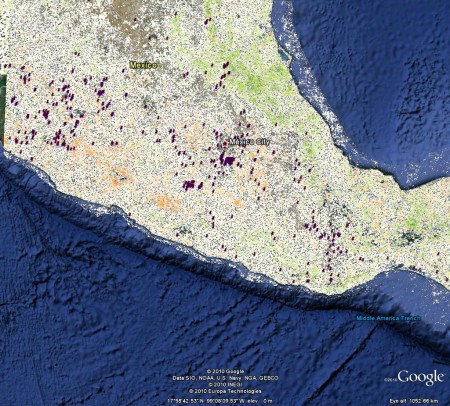 Readers with a long memory will remember that it was back in the summer that we first pointed to worrying signs that Taro Leaf Blight might be in West Africa. By October TLB was pretty much confirmed in Cameroon and the Pacific had offered its resistant varieties. The offer has not yet been taken up. Now there’s another flurry of activity at Pestnet, triggered by news of devastating losses in Nigeria. And John Cho from Hawaii informs us that there has been success in breeding for the disease in the Dominican Republic too. What will it take to get the TLB resistant varieties that we know exist in a few places around the world to where they are clearly urgently needed? This from the blurb on a new, and very timely, book on taro just out from Bioversity:
Readers with a long memory will remember that it was back in the summer that we first pointed to worrying signs that Taro Leaf Blight might be in West Africa. By October TLB was pretty much confirmed in Cameroon and the Pacific had offered its resistant varieties. The offer has not yet been taken up. Now there’s another flurry of activity at Pestnet, triggered by news of devastating losses in Nigeria. And John Cho from Hawaii informs us that there has been success in breeding for the disease in the Dominican Republic too. What will it take to get the TLB resistant varieties that we know exist in a few places around the world to where they are clearly urgently needed? This from the blurb on a new, and very timely, book on taro just out from Bioversity:
While new market opportunities and taro’s versatility are responsible for its growing popularity in markets, diseases and climate change also pose ever greater threats to its production and distribution. The current outbreak and spread of the devastating taro leaf blight in West Africa clearly highlights this vulnerability. By taking a global approach to the crop, the authors highlight ways to address new outbreaks of pathogens such as taro leaf blight.
